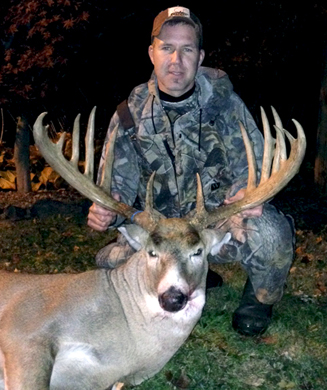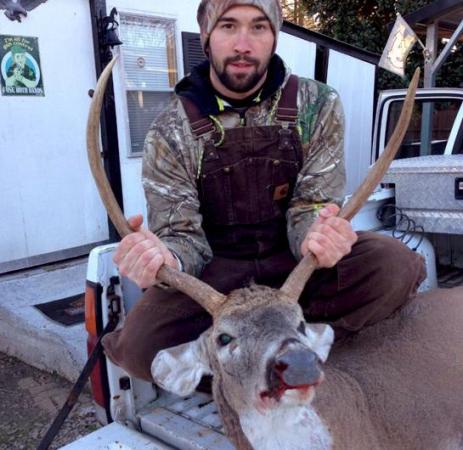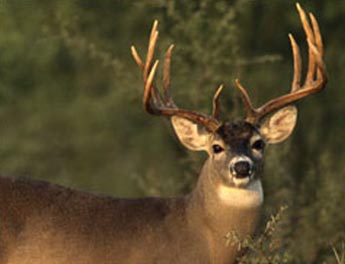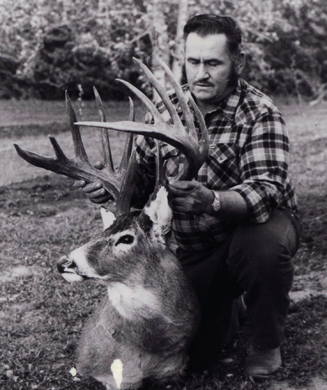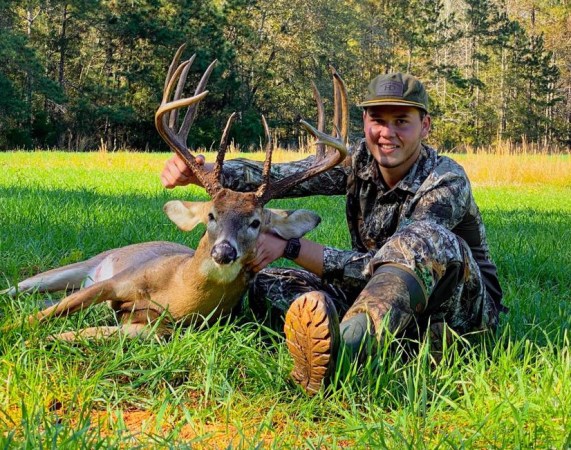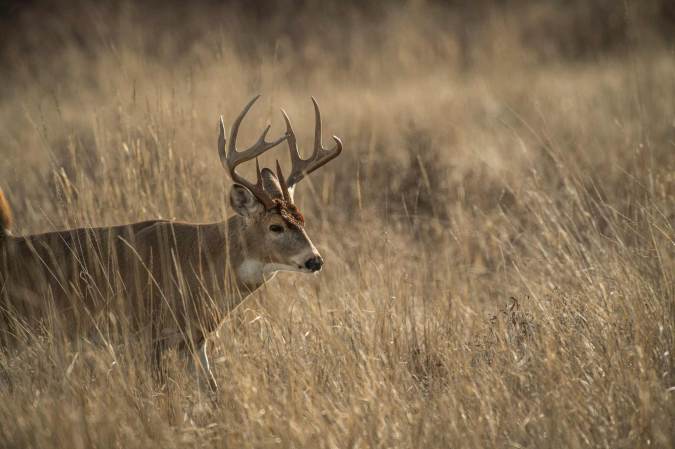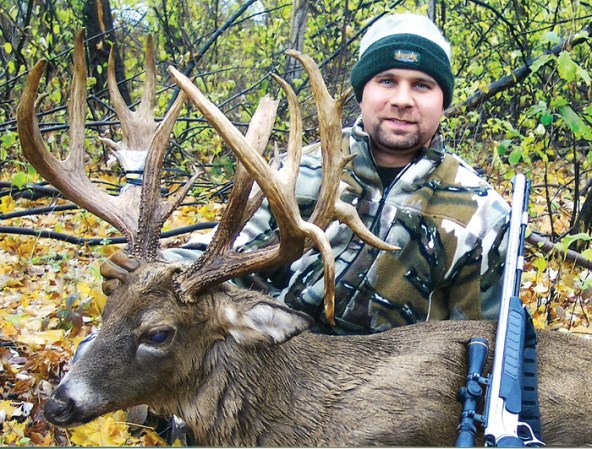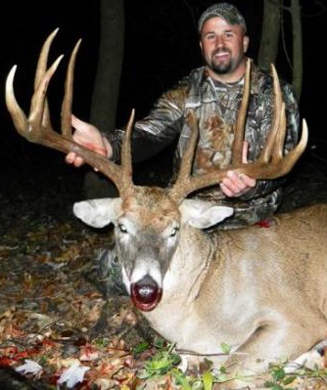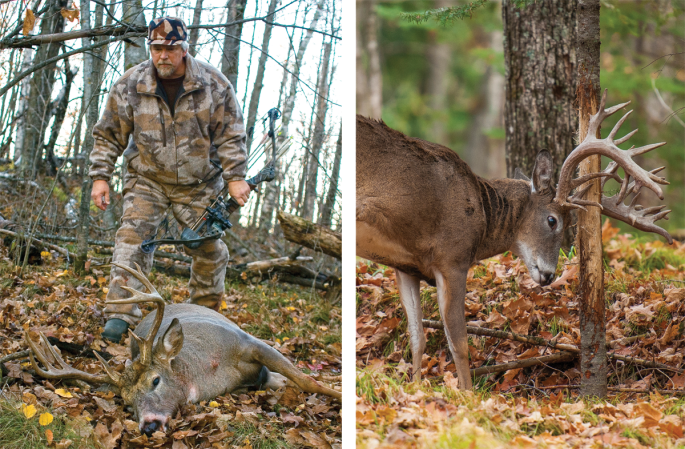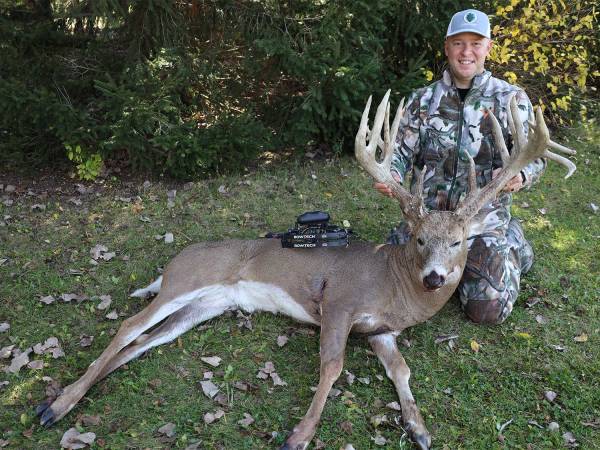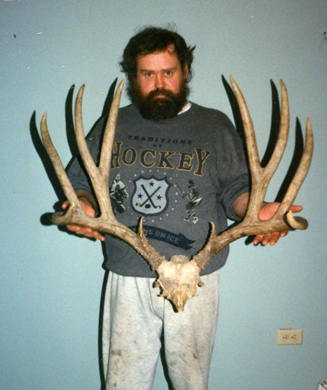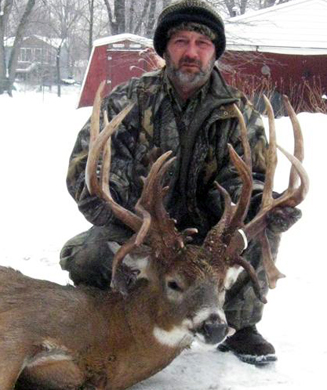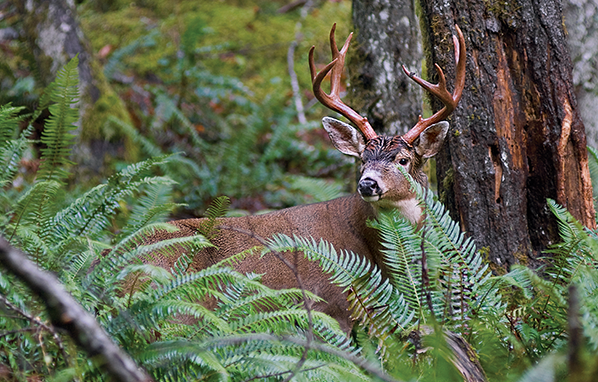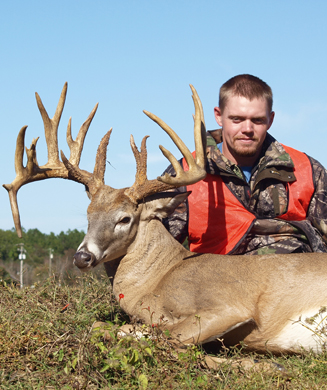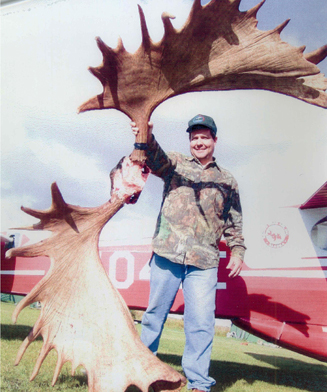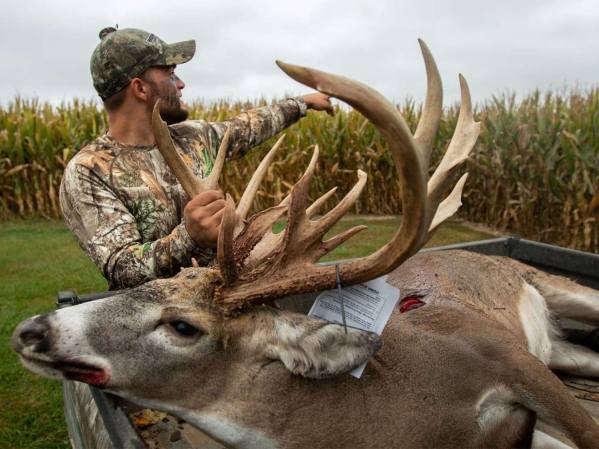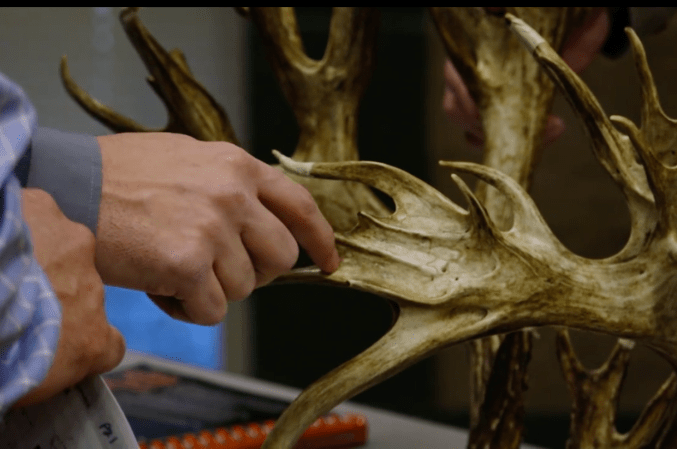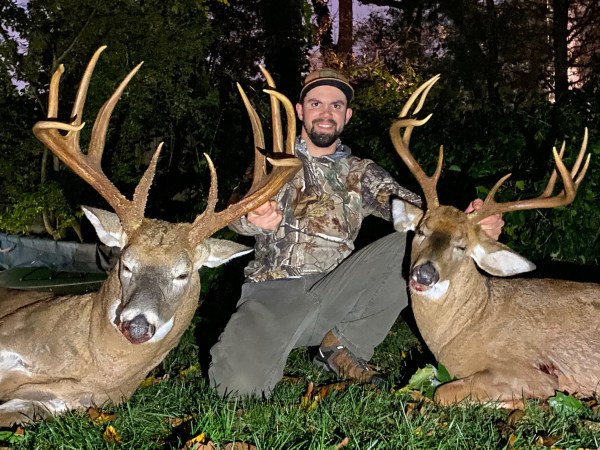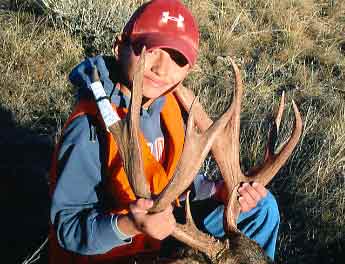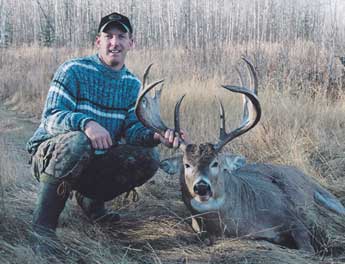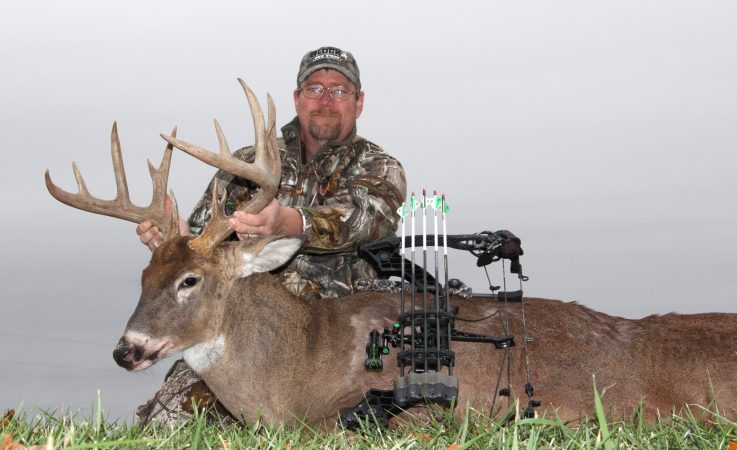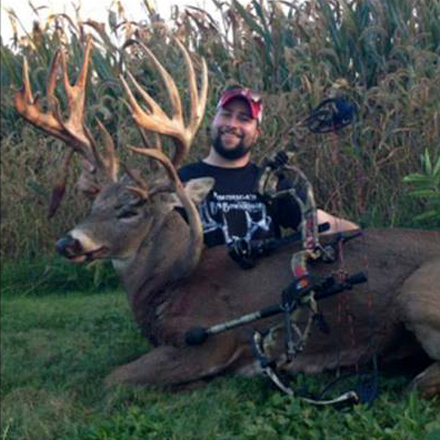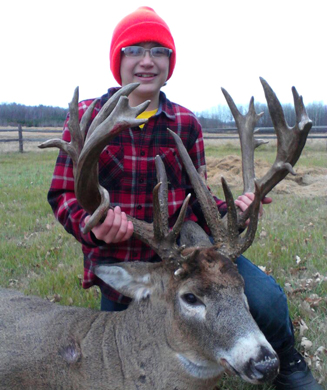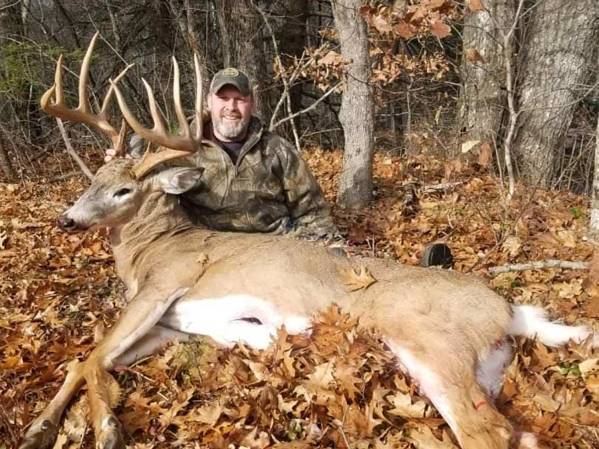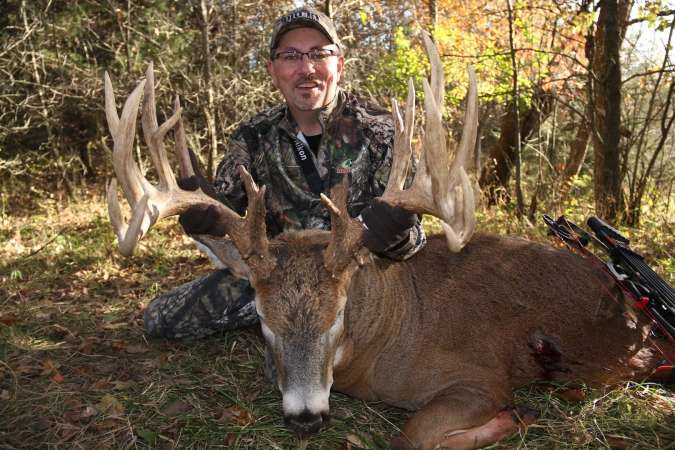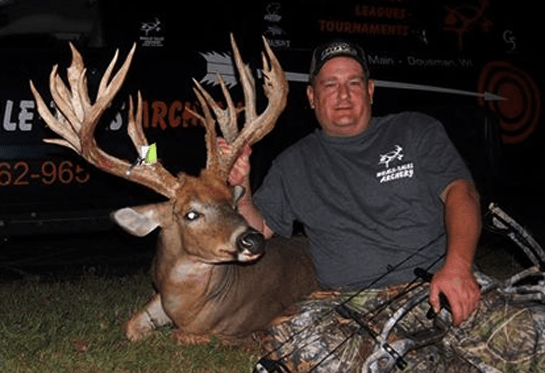Word spreads quickly when a gargantuan whitetail is felled. A crowd gathers wherever the fortuitous hunter stops–the check station, the sporting-goods store, the diner. Pickups packed with men in orange arrive to gawk at the deer with all those points. The local newspaper does a story. Sportsmen in area hunting clubs gossip about the details. Someone calls the Boone and Crockett Club. A B&C scorer arrives. A green-score is tallied. The hunter hands his prize to a taxidermist, wondering if his nerves will hold up through the drying period. After all, his name might be immortalized in Records of North American Big Game.
Because this sequence of events is a dream we all share, OUTDOOR LIFE scoured the country to bring you tales from hunters who saw the dream become reality last season. Some hunters were just plain lucky. Others were hard-core types who got their trophies after years of pursuit. Though we couldn’t track down every huge whitetail bagged last season, we did our best to highlight some of the biggest taken under fair-chase conditions.
Sorry, This Spot’s Taken
On December 5, 2002, Kajetan Sovinski, a 53-year-old resident of Turners Falls, Mass., decided to venture onto public land on the fourth day of the state’s firearm deer season. Armed with a 20-gauge slug gun, Sovinski and his 27-year-old son Bobby entered the woods well before daybreak. It was the first time they’d hunted there, though they had scouted the area previously and were trying to find their predetermined stands in the dark. As they neared “their spot,” they stumbled into another hunter who was already set up. Shrugging it off, they slogged through the dark forest to an area that they were unfamiliar with, took up positions several hundred yards apart and settled in for the morning hunt.
HOW HE DID IT: At 7:30 a.m. a doe came out of the brush and made her way past Kajetan on his right side. “I probably would have shot the doe, but it came by me where I couldn’t turn enough for a shot,” Sovinski admitted. “As I was contemplating my next move, I noticed a deer following the doe. This second deer stopped where I couldn’t get a clear view of it. Finally, after ten minutes, the deer moved forward and I saw a couple of antler tines through the brush. I quickly took aim and fired. The buck went down with the first shot, but he regained his feet. I let him have it again and he tumbled out of sight.
“When I first walked toward the deer, I had a hard time finding it because it had fallen into a ditch. After a brief search, I spotted a tine sticking up from the snow and got the shock of my life. Now, I’ve killed my share of deer, perhaps twenty-five total, but that buck was bigger than anything I’d ever seen. As it turned out, his antlers were so big that dragging him out of the woods was nearly impossible. His huge rack kept catching and snagging on everything.”
By the time Sovinski made it to the check station at least 30 people were waiting to see the deer. The buck ended up grossing 204 1/8 and netting 193 3/8 typical B&C points. Its 10-point rack has a 26 1/2-inch spread and both G2 tines are over 13 inches long. The buck ranks as Massachusetts’ largest typical buck of all time.
Monster of the Hedgerow
After getting a quick glimpse of a non-typical during Illinois’s first firearms season, all 20-year-old Andy Carlson knew was that the buck had points sticking everywhere, “like he had an extra antler or two stuck on his head,” says Carlson.
Expectation was understandably high for the second gun season. Carlson would have heard if a gigantic non-typical had been shot on any of the farms around his family’s 900-acre spread, so he was sure the buck was still out there.
The first day of the second gun season passed without anyone on the farm catching a glimpse of the huge deer. The next day–Saturday, December 7–dawned cold with clear skies. Carlson took up a position along a hedgerow and waited patiently through the morning.
HOW HE DID IT: At 10 a.m. Carlson was about to head out when he saw several does come out of the hedgerow and turn his way. Moments later, the buck appeared, nose down and trailing one of the does. From over the top of the does, all Carlson could see were antlers coming right at him at a trot. He knew he’d have to shoot soon or one of the does would pick him out and spook.
“Just as they were on top of me,” says Carlson, “the does turned and I had a thirty-yard shot at the buck. I didn’t dare look at his antlers; I just pulled the trigger. The twelve-gauge slug took him through the lungs and he hit the ground hard. He got back up and went maybe twenty yards before crumbling.”
Carlson had killed five bucks before this one–one a good 12-pointer. Weeks later, he took the rack to a local sportsmen’s show where a B&C scorer asked if he could measure the rack. Carlson knew it was big, but he didn’t know he had shot the second biggest non-typical buck bagged in 2002. Carlson’s buck is a mainframe 10-point with nine additional non-typical points. The net score totaled 241 7/8 non-typical B&C.
Big Buck or Bust
In late June 2002, Bob Odey, 44, of Hollandale, Wis., saw a monstrous non-typical walking through his backyard. Even with two months left to grow, the buck’s antlers were immense. Pointing at the buck, Odey asked his wife rhetorically, “Why can’t I ever see a buck like that when I’m hunting?”
HOW HE DID IT: Early on November 24, an overcast morning with the wind blowing hard from the northeast, Odey crawled into his blind near his home armed with a semi-automatic .30/06. His hunting partner, Jim Young, was sitting about 300 yards away on the other side of a thickly wooded, 40-acre property.
At 7:30 a.m. he saw a big doe being followed by a small-racked buck and decided to try to fill an antlerless tag. The shot was about 100 yards through thick cover. After shooting, he searched the area for a long time but couldn’t find any sign of a hit. What he did find were some rubs on telephone pole–sized trees that stood along the small creek. Odey decided to spend the rest of the morning near the rubs and found a comfortable log to sit on.
“I didn’t have to wait long,” says Odey. “Soon after taking a seat I saw a buck coming. I knew it had antlers and that it had a big, blocky body, but I didn’t know how big it was. When the buck stopped to work a licking branch, it turned and offered a broadside shot. My aim was true this time. As I approached, I stopped and noted that the antler protruding skyward had eleven points! When I saw both sides, I counted twenty-three points. That’s when I started hollering for my partner to come over.”
Bob Odey’s non-typical buck scored 226 1/8 B&C.
A Victorious Tag Team
Pulling out after a morning bowhunt on November 18, 2002, Reed Roundtree, 43, and David Marshall, 49, of Carmi, Ill., spotted a buck with “a rack so big it looked ugly” along on the opposite side of an open field. Stopping their vehicle, they grabbed their binoculars and watched the buck for about two minutes before it left the open area.
Though both Roundtree and Marshall have a number of trophy bucks on their den walls, neither had ever seen a buck like this. Roundtree hunted the deer for the remaining week of bow season, but even though he felt he found the buck’s pattern, he never saw him for a shot.
HOW HE DID IT: The night before the opening of gun season, Roundtree and Marshall came up with a plan. They knew the buck was comfortable traveling along a river bottom that bisects their private property. They figured its primary area was in that leased section. And they knew that a bunch of hunters would be on the leased ground on opening day. They hoped that hunting pressure would push the buck toward them as a result.
On November 22, 2002, the opener of the state’s first gun season, the duo took up positions 300 yards apart on same side of the river bottom. The morning had passed uneventfully; they hoped the afternoon hunt would be different. At 4:15 p.m., Roundtree was using a doe-in-estrus call when a doe went by Roundtree acting like it was being pursued. Several tense minutes later, Roundtree spotted the buck.
“I recognized him immediately as Mr. Big,” says Roundtree. “There was a lot of timber separating us, so I let him close the distance to fifty yards before squeezing off the shot with my single-shot, twenty-gauge slug gun.
“The shot felt good, but the buck bolted over the riverbank. I went and peeked over the hill and there he was. The buck had piled up right on the riverbank. I’d killed forty whitetail bucks before him, but this one left me speechless. I was suddenly aware that I had killed the biggest buck I probably will ever see in my life.”
Reed Roundtree’s non-typical buck scored 239 3/8 B&C.
Top Boone and Crockett Club Whitetails of 2002 (The Boone and Crockett Club; 406-542-1888; www.boone-crockett.org)
TYPICAL
1. 198 6/8 Daryl L. Blum Lewis County, MO 2. 194 Kevin C. Miller Kent County, MD* 3. 193 3/8 Kajetan R. Sovinski Franklin County, MA* 4. 192 2/8 T.K. Patterson & D. Dickson Souris River, MB 5. 189 5/8 Ron Wolford Geary County, KS
NON-TYPICAL
1. 260 1/8 Benjamin J. Brogle Gerrard County, KY 2. 241 7/8 Andy S. Carlson Henry County, IL 3. 239 3/8 Reed T. Roundtree White County, IL 4. 237 6/8 Harlan Swehla Des Moines County, IA 5. 234 4/8 Murray A. Pulvermacher Dana Salt Lake, SK
*new state records
Top Pope and Young Club Whitetails of 2002 (The Pope and Young Club; 507-867-4144; www.pope-young.org)
TYPICAL
1. 188 6/8 Robin Austin Stafford County, KS 2. 183 5/8 Scott Fritschle Clay County, IL 3. 180 4/8 Douglas Hood Rock Island County, IL 4. 180 3/8 Joe Lieb Allamakee County, IA 5. 180 2/8 John Benedict Clinton County, MI
NON-TYPICAL
1. 237 6/8 Harlan Swehla Des Moines County, IA 2. 234 5/8 Frank Caza Parkland, Alberta 3. 227 5/8 Gavin Risley Pike County, IL 4. 217 7/8 Steve Gum Jefferson County, IL 5. 217 John Bowser Wilson County, KS
FAST FACT
When Big Bucks Fall The top six Pope and Young Club typical and non-typical bucks taken in 2002 were all bagged between November 5 and 24; most of them dropped on or around November 10. It’s no coincidence that the peak of the rut falls between these dates in most of the country.

